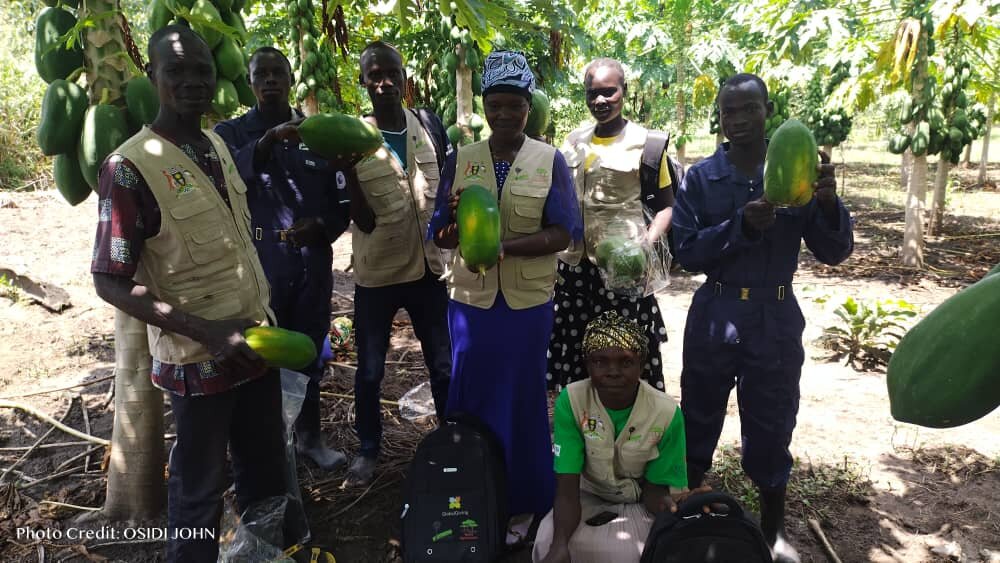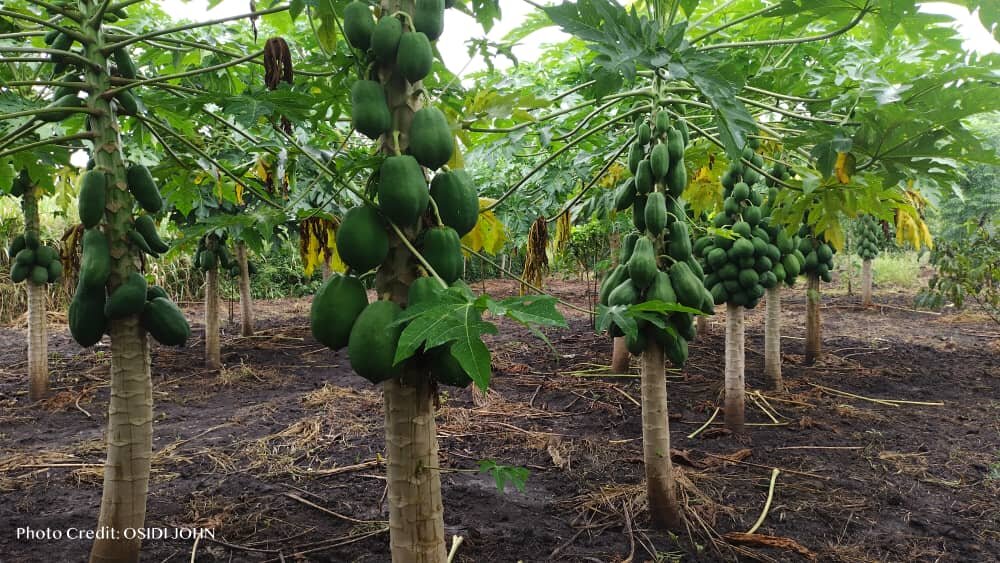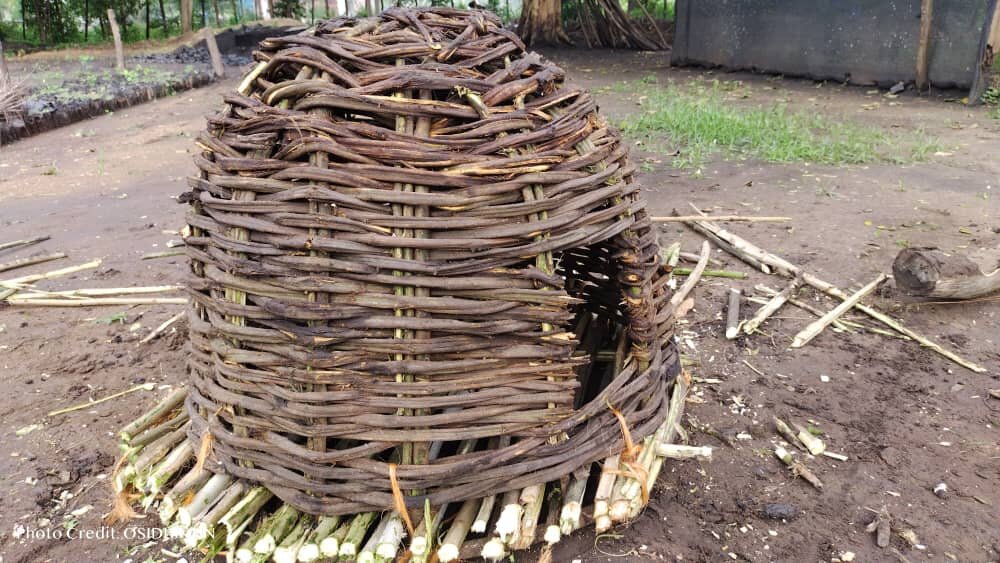By Cathy Watson | Chief of Partnerships
Sometimes when you run a project it is hard to know how you are really doing. It is always awkward to self-praise. And we lean towards self-critical. So, in the refugee area, as rain poured down, mud deepened around huts, and vegetable patches grew sodden, it was heartening to hear from three people who see our work with refugees from the outside and had good stuff to say.
The first was Ben, with whom we have collaborated since 2017 when we first set foot in West Nile. He works on energy for a German organization. Not everything our project does is perfectly documented. Sometimes we hand out seedlings, intending to record them later, but we do not. So when Ben told me that we had given his NGO seedlings that I had not known about, I was elated.
"You gave us seedlings of 6000 fast growing and 200 fruit trees to support Rhino Camp High School," he said. "That school has 1500 learners, a particularly active environment club, and 14 acres set aside for tree growing. They have already planted 10. Your seedlings will fill the gap so the school can have its own woodlot for fuel."
The Ugandan humanitarian worker went on: "The school has a cooking program with improved stoves. So we also constructed a wood curing store to boost efficiency of utilization of the woody biomass. And we provided a moisture meter to help them determine if the wood is really dry enough to use. All this has makes a truly massive difference to the amount of wood they use."
Clearly we are not the only ones doing good work! This is just so smart, and a measure of how the humanitarian response has become more environmentally tuned in the last five years. Largely gone are the days when agencies treated woodlands and forests as free fuel stores. Instead, more and more, schools with land are being supported to grow their own wood fuel, something that should be the norm everywhere, displacement setting or not. We are proud to have had an input into this.
We are even prouder about what Ben said next "Your Learning Centre is the only complete functional site in the refugee area with a training facility. Unlike other nurseries that run seasonally only for raising seedlings, it is a knowledge bank for community and partners. It has remained a model for learning and access to indigenous seedlings."
Immersed in pushing out seedlings to take advantage of the rain, we had not seen that statement coming. It was unexpected and welcome feedback. Oh heck, let's go full throttle and call it praise.
The second person seeing us from the outside was Ed in Bidi Bidi, the adjacent refugee settlement. His organization promotes building with "interlocking stabilised soil bricks" (ISSB) that are sun cured. This is a hugely powerful forest-saving approach to construction that, like woodlots for schools, should be the norm everywhere.
"A three-classroom block will use about 7000 ISSB bricks," he said. "Using ISSB bricks instead of fired bricks on a classroom block saves 24 tons of firewood and reduces carbon dioxide emissions by 39 tons."
Let me repeat that - "saves 24 tons of firewood". On top of this jaw-droppingly effective tree-sparing approach to making bricks, his NGO is also planting trees in schools. We gave him 2700 seedlings this year of ten species, including African mahogany, fast growing indigenous Markhamia and Albizia, and food trees jackfruit, soursop and tamarind, the pods of which have Vitamin C rich pulp.
"Over 70% of seedlings have survived," said the young British humanitarian worker. "And your trees from 2022 are doing great! We sadly lost about 45% of them, but the survivors have now benefited from two rainy seasons and are looking strong. And I must say Erik and John have been fantastic, always available and supportive."
Erik is our Uganda country representative and John our nursery manager. It is heartwarming to hear this about members of our. We have a lot of respect for Ed and his organization. We will always be a source of seedlings for them.
Finally, Sarah, who was originally based with us, has now taken a step back and is studying not just what we do but also the different tree-based approaches of multiple agencies, NGOs and government across refugee settings in Uganda. She said something to us at a time we were feeling outright stressed and overwhelmed.
“It takes a lot to have people on the ground promoting the mission," said the PhD student and Fulbright awardee. "Most NGOs are planting exotic woodlots. Very few have the bandwidth for multiple species like ICRAF is doing.”
It was encouraging to hear that and gives us a boost to go on. In the last quarter we have seriously pondered whether, despite your generous donations, we can continue much longer without official funding from an international donor, something we constantly seek.
But just as we were wavering, Sarah reaffirmed our model: "Thirty to forty trees are totally possible on most refugee plots, especially with planting on boundaries. And when you combine it with the biocircular economy approach that ICRAF is also promoting, where all water and organic matter is re-used, you maximize what you can get from the plot."
Referring to Lily, a refugee who is one of our community-based facilitators, she further said, "I can really see the ICRAF model manifested on her own plot. She has a woodlot, boundary trees, and a homegarden. She has easily 50 trees."
The refugee response in West Nile, NW Uganda, is at a crossroads. The UN and other agencies are scaling down because of other global emergencies. Most donor-funded environmental projects are ending. But we are not packing up yet. Ben, the Ugandan humantarian worker who I spoke of at the beginning, said about our project:
"We need to push all avenues to find resources to sustain the Learning Centre and its extension model, considering the role it plays in restoration of the ecosystem."
Then he said, "Let's sail together."
And for now that's what we plan to do with every sinew that we have. With excellent partners like Ben and Ed, with the scrutiny of researchers like Sarah, with our field team, with our Nairobi leadership, and with your generous donations, we will continue to do our best for refugees, hosts and biodiversity. Thank you to all of you for sailing with us for all these years. Thank you helping us grow and conserve tree cover in Imvepi and Rhino Camp Refugee Settlerments.
Links:
Project reports on GlobalGiving are posted directly to globalgiving.org by Project Leaders as they are completed, generally every 3-4 months. To protect the integrity of these documents, GlobalGiving does not alter them; therefore you may find some language or formatting issues.
If you donate to this project or have donated to this project, you can recieve an email when this project posts a report. You can also subscribe for reports without donating.
Support this important cause by creating a personalized fundraising page.
Start a Fundraiser

